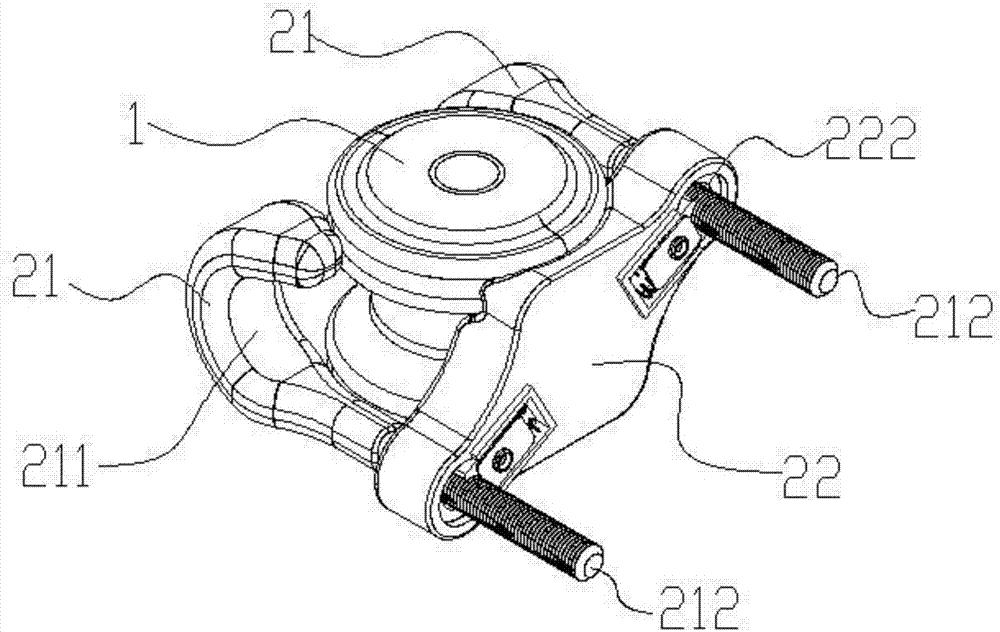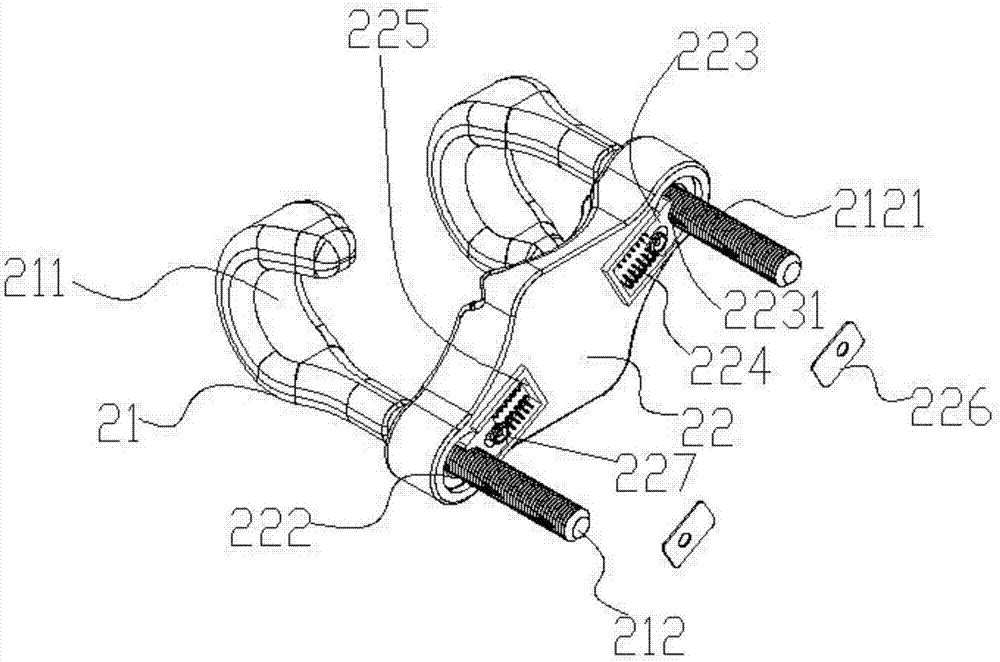Self-locking hook wire clamp
A wire hooking and self-locking technology, which is applied in the direction of the cable suspension device, can solve the problems of cable overheating, low street code efficiency, time-consuming and labor-intensive problems, and achieve the effect of not easy to loosen, simple structure and convenient use
- Summary
- Abstract
- Description
- Claims
- Application Information
AI Technical Summary
Problems solved by technology
Method used
Image
Examples
Embodiment Construction
[0021] A self-locking fastening clamp of the present invention will be further described below in conjunction with the accompanying drawings:
[0022] It should be noted that the terms "upper", "lower", "front", "rear" and similar expressions used in this specification are only for the purpose of illustration, and are determined according to the actual situation in the embodiment; "Porcelain Lu" can be selected from the current common street code porcelain or similar structures.
[0023] Such as Figure 1-2 As shown, it includes a splint 22 and two J-shaped clips 21. The bending part of the J-shaped clip 21 is a clamping part 211, and the side bar is a locking rod 212. The splint 22 is provided with two corresponding locking rods 212. Two locking holes 222, two J-shaped clamps 21 are diagonally arranged on the splint 22 and their hooks are opposite, and its locking rods 212 pass through the locking holes 222 on the splint 22 vertically respectively, and the locking rods 212 a...
PUM
 Login to View More
Login to View More Abstract
Description
Claims
Application Information
 Login to View More
Login to View More - R&D
- Intellectual Property
- Life Sciences
- Materials
- Tech Scout
- Unparalleled Data Quality
- Higher Quality Content
- 60% Fewer Hallucinations
Browse by: Latest US Patents, China's latest patents, Technical Efficacy Thesaurus, Application Domain, Technology Topic, Popular Technical Reports.
© 2025 PatSnap. All rights reserved.Legal|Privacy policy|Modern Slavery Act Transparency Statement|Sitemap|About US| Contact US: help@patsnap.com


